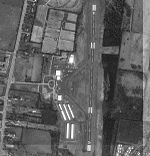The Battle of Stones River, also known as the Second Battle of Murfreesboro, was a battle fought from December 31, 1862, to January 2, 1863, in Middle Tennessee, as the culmination of the Stones River Campaign in the Western Theater of the American Civil War. Of the major battles of the war, Stones River had the highest percentage of casualties on both sides. The battle ended in Union victory after the Confederate army's withdrawal on January 3, largely due to a series of tactical miscalculations by Confederate Gen. Braxton Bragg, but the victory was costly for the Union army. Nevertheless, it was an important victory for the Union because it provided a much-needed boost in morale after the Union's recent defeat at Fredericksburg and also reinforced President Abraham Lincoln's foundation for issuing the Emancipation Proclamation, which ultimately discouraged European powers from intervening on the Confederacy's behalf.
Union Maj. Gen. William S. Rosecrans's Army of the Cumberland marched from Nashville, Tennessee, on December 26, 1862, to challenge Bragg's Army of Tennessee at Murfreesboro. On December 31, each army commander planned to attack his opponent's right flank, but Bragg had a shorter distance to go and thus struck first. A massive assault by the corps of Maj. Gen. William J. Hardee, followed by that of Leonidas Polk, overran the wing commanded by Maj. Gen. Alexander M. McCook. A stout defense by the division of Brig. Gen. Philip Sheridan in the right center of the line prevented a total collapse, and the Union assumed a tight defensive position backing up to the Nashville Turnpike. Repeated Confederate attacks were repulsed from this concentrated line, most notably in the cedar "Round Forest" salient against the brigade of Col. William B. Hazen. Bragg attempted to continue the assault with the division of Maj. Gen. John C. Breckinridge, but the troops were slow in arriving and their multiple piecemeal attacks failed.
Fighting resumed on January 2, 1863, when Bragg ordered Breckinridge to assault a lightly defended Union position on a hill to the east of the Stones River. Chasing the retreating Union forces, they were led into a deadly trap. Faced with overwhelming artillery, the Confederates were repulsed with heavy losses. Probably fooled by false information planted by McCook and campfires where no troops were posted, set up by Rosecrans, and thus believing that Rosecrans was receiving reinforcements, Bragg chose to withdraw his army on January 3 to Tullahoma, Tennessee. This caused Bragg to lose the confidence of the Army of Tennessee.





